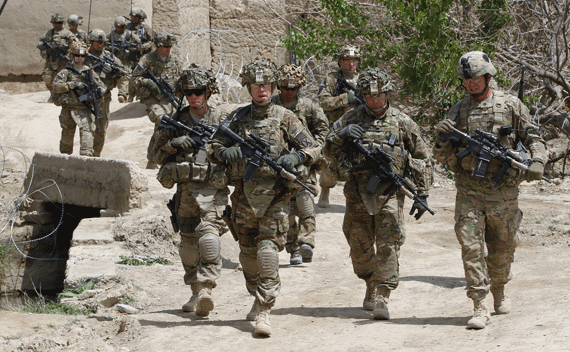Guest Post: Are U.S. Troops Losing Hearts and Minds in Afghanistan?
More on:

Reuters reports on a new study by the International Council on Security and Development (ICOS) that could roil the Afghanistan debate here at home. The study concludes that while U.S. forces are winning on the battlefield against the Taliban, they are losing the support of the Afghan people. The study draws on polls done among men in southern Afghanistan where the fighting has been the heaviest. The study is not publicly available yet, but since its conclusions are already making their way into the news cycle, my colleague Steve Biddle kindly offered up his assessment.
The ICOS analysis doesn’t appear to have been released yet, so I haven’t been able to read the whole study. But for what it’s worth, my initial reaction is that the Reuters story reflects a common misunderstanding of counterinsurgency (COIN).
Many people misunderstand the purpose of population security in COIN. The phrase "hearts and minds" doesn’t help. The purpose is not to win by making the locals like you, as the bumper sticker seems to imply. The purpose is to replace insurgent control of the population with government control of the population. This normally requires combat to clear insurgents from the area and defeat their efforts to return. Combat in populated areas is always unpopular with resident civilians. Whatever else they want from life, civilians want to survive. And combat in populated areas always kills innocent civilians as a byproduct of the effort to kill insurgents. Before the government offensive, there is usually little violence--when insurgents control the area they don’t need to kill people. Then the government launches an offensive to clear the insurgent presence, and there is a lot of violence, with inevitable damage to civilian property and deaths of innocent people. When asked, as ICOS did, civilians normally prefer insurgent control and calm over a war amongst their homes and families that might get them killed. Once the government establishes real, persistent control, the preference returns to calm and safety over combat and danger, but this now favors the government over the insurgency.
(This is not unique to COIN, by the way. The population of Normandy was not happy when the Allies invaded in 1944. Most preferred calm and German occupation over destruction of their homes and livelihoods, chaos, and the risk of death for themselves and their families, even in exchange for freedom from the unwelcome Germans. Survival tends to outweigh other considerations in wartime among directly threatened civilians.)
This is not to say that ideology or government service delivery or corruption are irrelevant. They matter a great deal: the greater the interest divergence between the combatant and the population the more violence the combatant needs to clear its enemy from the battlefield, and the less resilient its control is afterward. Reducing the interest divergence by offering better government lowers the necessary scale and duration of violence, and especially, makes it harder for insurgents to re-infiltrate after being removed. So governance reform is very important. But there will still have to be violence if the government is going to reestablish control. To say that governance reform or economic development can reduce the fighting’s scale and duration does not mean they can eliminate it altogether unless the government simply leaves insurgent-controlled areas in their enemy’s hands uncontested. And because the violence is always unpopular with the civilians trapped in the middle of it, polls will normally show dissatisfaction with the fighters seen to have caused it. When things were calm before the government or the United States showed up and are now violent, you can expect the United States to poll badly there.
Note that the same poll apparently shows much more support for the United States and the Afghan government outside the south (and probably parts of the east, too). In other parts of the country, the government is more prone to be in control, with the insurgents fighting to get in. Unsurprisingly, this yields better polls for the government and worse ones for the Taliban, for the same reasons described above. The fact that Taliban ideology is widely disliked in Afghanistan (even in the south, according to multiple polls over the last decade) helps here, and is making it harder for the Taliban to break in than it would otherwise be. Offering a preferable governance alternative ("hearts and minds," sort of, if one really must use the phrase) does matter.
But so does military violence, and so does the identity of the party who appears to be starting it at the moment. For now, in the south, we’re seen to be starting it. And that’s going to hurt our polling there for a while. But that doesn’t mean that the war is lost, or that COIN theory is all wrong, or that our strategy is based on flawed assumptions about "hearts and minds."
(As a minor aside, it’s also interesting that ICOS apparently surveyed only military age males, the sub-population least prone to support foreign forces. I suspect the other issues noted above are more important. But other things being equal, this survey population is likely to under-predict general popular support for the International Security Assistance Force substantially.)
More on:
 Online Store
Online Store
